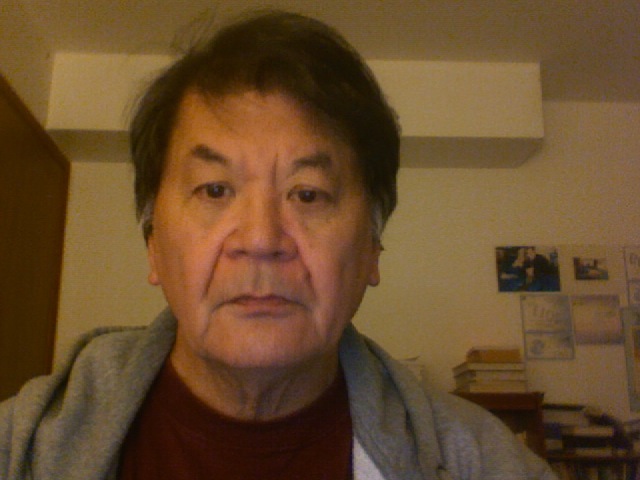 Interviewed by David Fewster
Interviewed by David Fewster
Born in China in 1949, Koon Woon emigrated to the U.S. in 1960 to join his family, who owned or managed a series of restaurants in the coastal towns of Washington and San Francisco. In his twenties, Woon was diagnosed with severe bipolar disorder/paranoid schizophrenia and spent time in hospitals and institutions; in that same decade, he started writing under the tutelage of legendary professor Nelson Bentley at the University of Washington. In 1998, his book The Truth in Rented Rooms (Kaya Press), primarily set in the milieu of welfare hotels and subsidized housing in Seattle’s International District, garnered praise from Lawrence Ferlinghetti (“These poems set a thousand horses galloping in the Asian diaspora in which so many are caught.”), Sam Hamill (“natural, timeless, yet inevitable as a moonrise over the mountains”), and Bob Holman (“Li Po in modern drag, the voice of New America . . . Koon Woon has written THE TRUTH!”). And further accolades followed: Koon Woon won the American Book Award in 2014 for Water Chasing Water (Kaya Press), a collection spanning four decades of his poetry, and in 2017 he was featured on PBS NewsHour reading his poem “The High Walls I Cannot Scale (with apologies to Tu Fu)”; the segment has received over 1200 views on YouTube.
Generous in his support of other writers, Woon founded Goldfish Press in 2006; he also hosts the online journal Five Willows Literary Review and Chrysanthemum, his long-running, sporadically-produced journal, released the Chrysanthemum 2020 Literary Anthology last spring, featuring new work from writers in the Pacific Northwest and around the globe. His latest book is Rice Bowls: Previously Uncollected Words of Koon Woon.
David Fewster: Often in poems and conversation, you refer to yourself as a “paper-son poet.” What does that mean?
Koon Woon: My village was named Nan On, or South peace. Everyone in my village is named Lock. There are two other villages of the Lock clan adjacent to us. We are in the district of Sui Po in Toishan County, Kwangtung Province, on the Southern coast of China. Back in the latter part of the 1800s, there was a great famine in Toishan. Most of the men immigrated to America as “indentured servants.” My great-grandfather came to Hoquiam, Washington, where he operated a laundry and had shares in a restaurant. He was called Lock Lick, meaning he was a Lock and he had great strength. His English ability was quite good and so the mayor of Hoquiam went with him to the Lock villages to conscript 500 men to come over to build rails to logging areas. Old rail tracks can still be found in the woods in places like Humptulips, Washington. One of these men that my great-grandfather brought over was none other than the grandfather of our former governor Gary Locke (his family had anglicized their name.) Well, then, why is my name Woon?
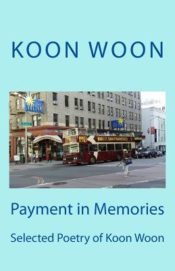 Because of US immigration policy for much of Chinese American history, Chinese women were not allowed to come with their men. So Chinese immigrants went back to China for conjugal visits. Every time they’d go back to China, they’d report that they sired a son. And there would be a paper “documenting” that claim. My grandfather, however, never reported he had a son in China, his son being my father. And so when my father immigrated to the US, he purchased a “paper son” immigration paper from the Woon family and came over to the US as a Woon. My father thus assumed a false identity, and thus I am known as Koon Woon, when most Chinese people know I am a Lock.
Because of US immigration policy for much of Chinese American history, Chinese women were not allowed to come with their men. So Chinese immigrants went back to China for conjugal visits. Every time they’d go back to China, they’d report that they sired a son. And there would be a paper “documenting” that claim. My grandfather, however, never reported he had a son in China, his son being my father. And so when my father immigrated to the US, he purchased a “paper son” immigration paper from the Woon family and came over to the US as a Woon. My father thus assumed a false identity, and thus I am known as Koon Woon, when most Chinese people know I am a Lock.
When my father immigrated to America he joined his sister, my aunt Lock Gim Gee, in San Francisco. He worked in the Oakland Shipyards as a torch cutter on naval ships. He also went to night school to learn English. He was making good money, like many people in World War II. But wastrels enticed him to gamble. He would have a lunch all made up in his lunch box on the way to work and these gamblers would ask him to go gambling. He would lose all his money. He later told me that he had even slept on the streets. Finally, an older Chinese man asked him to go to Hollywood with him and work as a waiter. “I made enough money in wages and tips in one year that I was able to go back to China and see your mother,” he later told me. Apparently for several years he had sent no money to my mother. He must have gone back in 1948 for I was conceived and born February 2, 1949. My mother came to America when I was two, leaving me to the care of my maternal grandmother and an adopted sister who is nine years older than I am.
DF: So, you were obviously in China long enough to have memories of growing up there.
KW: I “killed” my grandmother in my mind almost two decades before she died. I caught the jet alone to leave China for America at age eleven. I had to leave her in China. I was her “little man” and I caught fish for her, watered her gardens, and got up at 3AM to help her make pastries for the holidays. She was the source of news about my father. I don’t remember her talking about my mother then. I could have suppressed all those memories. And what I remember is selective and that is not the work of solely the conscious mind either.
I would be watching the older boys fishing off the pier into the village pond. I don’t know how I was so clumsy, but three times I fell in and drank a belly full of water before an older boy lifted me out. It was all the more mysterious because the water was not over my head. Someone would send for my grandmother. That’s when she would trot the fastest she could in her bound feet. Later she would burn incense to invoke the gods to protect me, but the gods must be hard of hearing, because it happened three times. I asked my psychiatrist if I was trying to commit suicide. Now, with my life nearing the end, I surmise it was some kind of attempt to seek help. I was grieving!
DF: What were the early years like in America?
KW: One day in the early afternoon in Mr. Fare’s 7th grade English class at Hopkin’s Junior High in Aberdeen, I got called on the intercom to go to the Principal’s office. I was a little nervous walking down the hallway. I was only fourteen at this time and I had been in the U.S. less than three years from China. But when I got to the office, the only thing waiting for me was the phone. The Principal said that my father was on the phone.
My father said, “Here’s what I want you to do. Right after school, you go home and take bus to Montesano to help me at the restaurant.”
At that time in 1962, we were sardined in the housing project in the West End of Aberdeen, WA. There were ten of us living in a three-bedroom duplex, Our only source of income was my father’s employment as a cook. He had been working at the Smoke Shop restaurant owned by the mayor of Aberdeen as a breakfast cook when all of a sudden Sally offered him a job at the China Doll in Montesano, some ten miles east of Aberdeen.
 At the backroom of the China Doll, as soon as I dished myself a plate of rice, my father criticized me for not eating enough. “It is going to be a long night,” he said, “you are going to need to work hard.” I was never robust as a child though. Malnutrition in China in my boyhood made me thin and weak and a bit bowlegged, with spine curvature from the lack of calcium. As soon as I finished eating, my father asked me to peel a big pot of boiled potatoes and make a huge mound of hash browns. The menu had steaks and chops beside chop suey and egg foo young.
At the backroom of the China Doll, as soon as I dished myself a plate of rice, my father criticized me for not eating enough. “It is going to be a long night,” he said, “you are going to need to work hard.” I was never robust as a child though. Malnutrition in China in my boyhood made me thin and weak and a bit bowlegged, with spine curvature from the lack of calcium. As soon as I finished eating, my father asked me to peel a big pot of boiled potatoes and make a huge mound of hash browns. The menu had steaks and chops beside chop suey and egg foo young.
The side work in a restaurant is endless. This was in the late afternoon, about four o’clock. My father had tons of things to do. He had to make sweet and sour spare ribs, fried rice, egg foo young, while I had to make batter for the deep-frying. He fortified himself with coffee and cigarettes. Those days there were no egg roll wrappers and you actually had to make your own wrappers out of eggs and flour in the wok and it was very delicate work. My father was able to do it since he had worked in large, fancy restaurants in San Francisco before he moved to Aberdeen. He moved to Aberdeen because he was planning a family, after my mother immigrated to America in 1951.
A SMOKE BREAK AT THE NUCLEAR COMMAND
We multitask—chop, grill, wok, and pickle.
They are fickle, can come at all hours, drunk,
after sex, before meetings; hucksters, gangsters,
no telling who wants what stir-fried,
steam rock cod with its head and bulbous eyes
My father at the meat block hacks spareribs, carves bone from chicken,
minces onions. Six sons chow the mein, French-fry the sausage,
whip the gravy, beat the eggs until you can fool
the young into thinking it’s sperm yanked from a calf.
Smoke signals say the pork chops are burnt, the white sauce
turning yellow, while waitresses ladle
soup. Sounds like feeding time at the zoo.
Chopsticks tingle from a corner booth,
On and on motors start and stop, doors open and shut,
Ice water is set down as menus are tossed. You need a minute?
Mom is helping the girls wash glasses and tea pots.
It would be sinful to run out of hot mustard during the rush.
My father drinks my coffee and I smoke his Marlboro,
two cowboys in a cattle drive fending off rustlers, and
damn! The waitress says that the women’s toilet has overflowed!
We’re going to go fishing as soon as our mental breakdowns are over with.
We’re going to take a smoke break from the nuclear command.
Just then, a party of 12 comes in—well, put two tables together,
like a man joining a woman, the yin and the yang, or kids with yo-yo’s.
We are a family doing family business, money for school books,
Mom’s dentures.
DF: What were some of your early literary enthusiasms?
KW: The first book that made me cry, I remember, was Charles Dickens’s “Oliver Twist.” But I did not feel I had any sensitivity to literature. I was more interested in reading philosophy. I read Nietzsche, Locke, Marx, Schopenhauer, Wittgenstein, John Wisdom (who was my philosophy teacher at the University of Oregon) and a host of analytic philosophers.
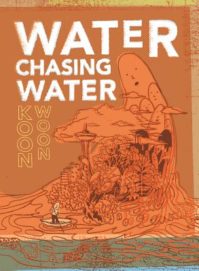 Although I was appointed literary chairman in my senior year at Aberdeen high school, my father did not allow me to stay after school to participate. All my teenage years were just school, work, and reading whenever I could get it in. I would also read books of a practical nature. I read books on buying and selling stocks, economic history, and even Mao Tse Tung’s books on literature and contradictions. My mind was bombarded with both Eastern and Western ideas; I read the Tao Te Ching and Freud in one breath.
Although I was appointed literary chairman in my senior year at Aberdeen high school, my father did not allow me to stay after school to participate. All my teenage years were just school, work, and reading whenever I could get it in. I would also read books of a practical nature. I read books on buying and selling stocks, economic history, and even Mao Tse Tung’s books on literature and contradictions. My mind was bombarded with both Eastern and Western ideas; I read the Tao Te Ching and Freud in one breath.
When I arrived in Seattle, when I was 19, I hung around The Last Exit on Brooklyn, a coffeehouse in the University District made famous (or infamous) by these misfits of society as well as some of its geniuses. Neighbors from Aberdeen showed me the place and I fancied myself an intellectual-to-be. We were introduced to hashish and Hermann Hesse. Ya, the Bead Game! The chess champs of Washington State played chess there, including John Braille, who never wore socks or shoes, not even in winter, but he had a car and so it was not like he was imitating Jesus or anything. I wanted to be a chess bum and a street musician and wanted to get out!
DF: Around what time did you begin to study poetry seriously?
KW: About 1982, when I lived at the Republic Hotel in Seattle’s Chinatown. I lived in #317. I was being ridiculed and bullied in the U-District and I could ill-afford to eat when my room on 16th NE was $170 a month while my SSI was only $300 a month. I called my mother when I would have paranoia and she would yank the phone from its jack. She finally told her younger brother Chay to find a room for me where he lived, and that was it. The room was a tenement but it had one redeeming value—it had a small table that I can place a typewriter on. The rent was $60 a month.
Allen Hikada, my former teacher at Seattle Central Community College, told me that maybe I should take a workshop from Nelson Bentley at the UW. Hikada had done a Master’s Thesis under Bentley’s supervision. I went to Padelford Hall on the UW campus where the English Department was but N. B. was never in his office. I got impatient and I called his home.
“Have you done much of this poetry stuff?” he asked.
“Yes, even including some that you rejected,” I fibbed. And so he let me come to the evening workshop, which unofficially was open to anyone who was a current or a former student of the UW. I was not even in English. That tells you his generosity and kindness. I felt so grateful I would come a half an hour early and help him arrange the chairs in two concentric circles for his class.
Nelson Bentley was aware and encouraged people with mental or emotional problems to work them out through poetry. It was a workshop and not a class and therefore we came with poems already written. He defended the poet against criticism by the class and that made him a friend of everyone! He was affectionately known as “Nelson” by his students but I always called him Professor Bentley, which is a Chinese reverence for teachers.
Robert R. Ward, a student in Bentley’s class, and some others began a tabloid called the Bellowing Ark and that was where “Goldfish” was published, which led to a small literary prize at Bumbershoot and got me on the literary stage.
GOLDFISH
The goldfish in my bowl
turns into a carp each night.
Swimming in circles in the day,
regal, admired by emperors,
but each night, while I sleep,
it turns into silver, a dagger
cold and sharp, couched at one spot,
enough to frighten cats.
The rest of the furniture
squats in the cold and dark,
complains of being a lone man’s
furnishings, and plots a revolt.
I can hear myself snore, but not
their infidelity. Sometimes I wake
with a start, silently they move back
into their places.
I have been unpopular with myself,
pacing in my small, square room,
but my uncle said, “Even in a palace,
you can but sleep in one room.”
With this, I become humble as a simple
preacher, saying “I have no powers;
they emanate from God.”
With this I sleep soundly,
Fish or no fish, dagger or no dagger.
When I wake, my fish is gold,
it pleases me with a trail of bubbles.
My furniture has been loyal all night,
waiting to provide me comfort.
There was no conspiracy against a poor man.
With this I consider myself king.
DF: So, you named your press after your poem?
KW: Goldfish Press began in 2006 after I inherited money from my mother and I thought I would try my hand as editor/publisher. We published Jack and Adele Foley, Joe Musso, and Joel Kabakov, whose book Available Light was favorably reviewed by Harvard.
DF: There’s been a flurry of Goldfish Press activity lately. Last year you published HOIL: An Unfinished Elegy by the Bay Area Surrealist Ivan Arguelles (who is the 2013 American Book Award Lifetime Achievement recipient.) It was inspired by the poet’s son, who died in 2018 after suffering four decades from encephalitis. How did the book come your way?
KW: I believe Ivan just submitted to Goldfish Press on the recommendation of Jack Foley. HOIL is a heartbreaking story and a story of devotion.
DF: And just out is the 220-page Chrysanthemum 2020 Literary Anthology. You had mentioned Chrysanthemum a while back—exactly when did you start doing it?
KW: I started Chrysanthemum as a tabloid in 1990; then it morphed into a chapbook and we published two anthologies in 2006 and 2020.
DF: Wow, that’s 30 years. But let’s go back to the publication of your first book—how did that come about?
KW: One day in August 1996, yes, it was the fifth of August, I received a long distance call from Wisconsin and the inquirer asked me, “Are you the editor of Chrysanthemum?”
I said yes, and though I was not publishing my small zine at the time, I said I was willing to look at her work. And so she sent me a short story. Upon receiving it in a hypomanic mood, I wrote back, “This story is so horrible, please don’t send me any more work for five years.”
Instead of getting angry, Betty thought it was honest and hilarious. And so she called me frequently, even as I tried to block her calls. Finally I acquiesced and talked with her and found out she was a retired librarian. She then asked me whether I wrote poetry. I told her I did. She asked me to send a batch of them to her to look at. I sent twenty poems.
This started the avalanche. She immediately acted as my “agent” in sending my work to publishers. The first place we sent the poems to was the University of Hawaii and they wrote back immediately that they do not publish original poems but only translations from Asia. Betty then sent the poems to Kaya Press, which was in New York at the time. Julie Koo and Sunyoung Lee were the managing editor and literary editor at the time. They wrote back that they would seriously consider it. Two months later, they accepted my book.
Perhaps the human element of this book’s reach is worth more than any of the craft of the poems themselves.
The long and short of it is that the birth of The Truth in Rented Rooms, which received unexpected acceptance, led to my second book with Kaya, Water Chasing Water. This gave me the confidence I needed to return to school to finish my BA degree at Antioch University Seattle and my master’s in literary arts from Fort Hays State University.
Click here to purchase The Truth in Rented Rooms
at your local independent bookstore

Click here to purchase Water Chasing Water
at your local independent bookstore

Click here to purchase Payment in Memories
at your local independent bookstore

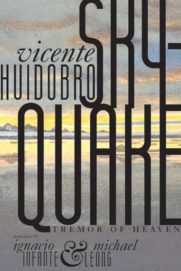 Vicente Huidobro
Vicente Huidobro
 Interviewed by David Fewster
Interviewed by David Fewster


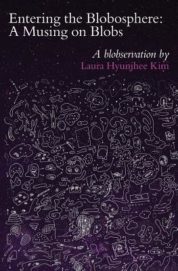
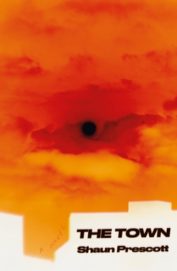
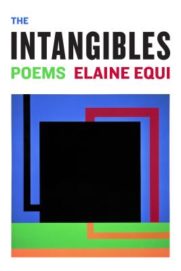
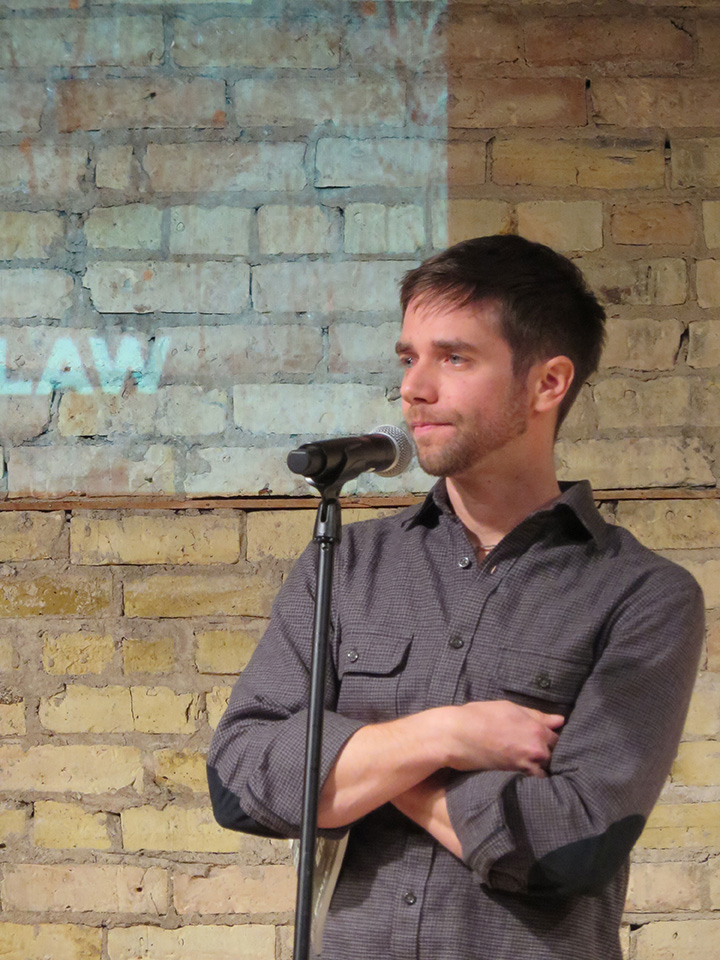
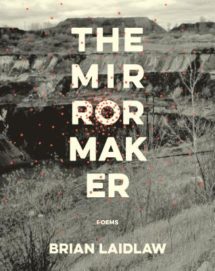

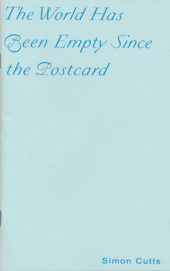
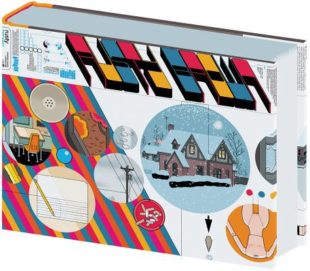
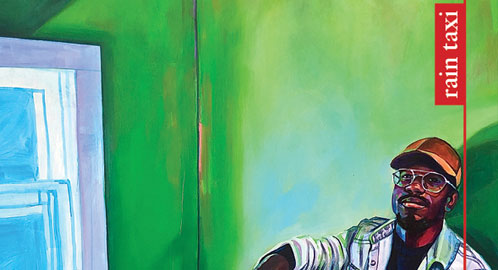
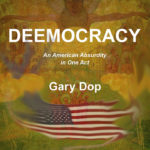
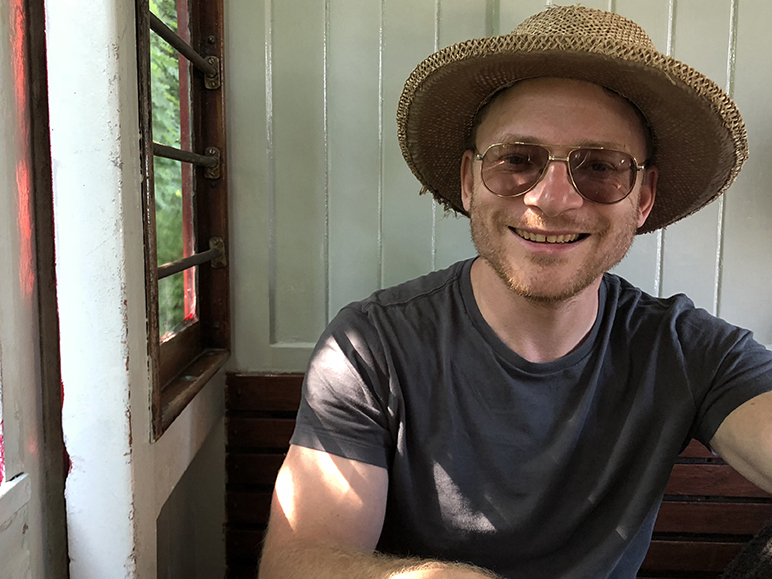
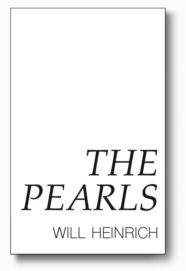
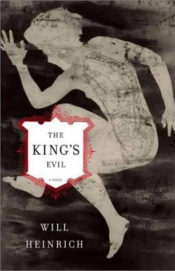 WC: Oh, ok. Well, the main character in The King’s Evil can’t really relate to other people, and the one person he relates to, the runaway Abel, in turn becomes a symbol of his inability to relate. The Pearls, on the other hand, is about family: Everybody is related to somebody, and all the characters seem to have families that interfere with everyone else’s families. So what was the transition between the two books?
WC: Oh, ok. Well, the main character in The King’s Evil can’t really relate to other people, and the one person he relates to, the runaway Abel, in turn becomes a symbol of his inability to relate. The Pearls, on the other hand, is about family: Everybody is related to somebody, and all the characters seem to have families that interfere with everyone else’s families. So what was the transition between the two books?